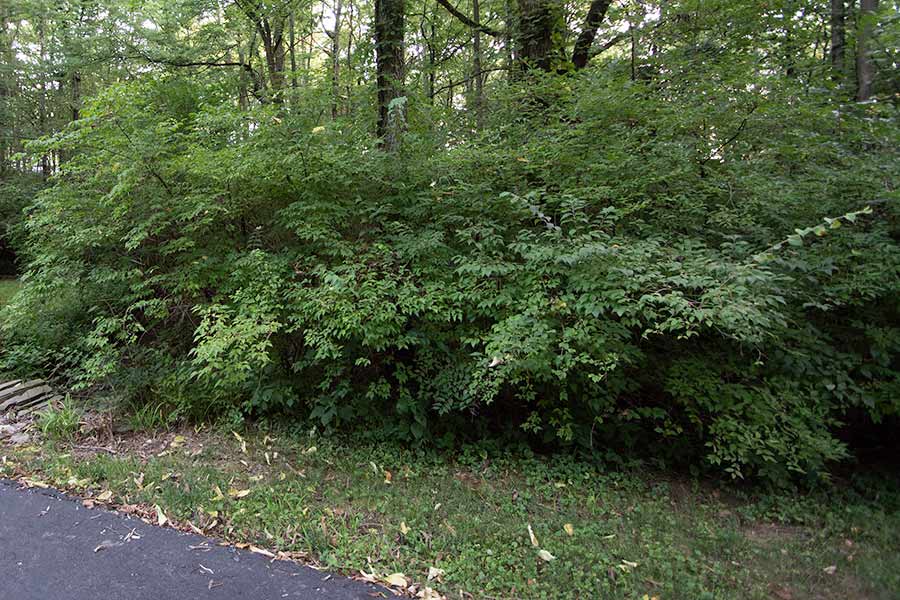A description of the Cedar Bog fen, highlighting the unique ecological conditions there, and what causes them (geology).
Cedar Bog located in Champaign County, Ohio, is not actually a bog. A bog receives water through rainwater, and loses water through evaporation. As time goes on plants decay and settle on the bottom where water can no longer escape. Cedar bog is a fen, which gains water through rain and springs. Cedar bog is in the middle of the low crest, meaning that water which is above land in other places, push the water out through the fen. Water then leaves through small streams and the limestone turns the water clear and alkaline.
2) Swamp Forest Community Description. Describe the overall environment of the swamp forest, in terms of the hydrology and general aspect iof the vegetation. More importantly, name using both common and scientific names the approximately half-dozen plants we noted in each of the three layers: overstory trees layer, shrubs layer, and ground cover layer. Include at least two captioned photos of members of each layer.
The environment had a number of plants growing in the moist environment that is Cedar Bog. Many ground cover layer plants grew near and in the streams running through the bog, while many high-rising trees stood tall. All the plants in this environment live in a moist and wet environment, and also love limestone. Some of these plants include:
Overstory Trees:


Other trees include:
- Northern Prickly Ash (Zanthoxylum americanum)
- American Basswood (Tilia americana)
- Alternate Leaf Dogwood (Cornus alternifolia)
- Hoptree (Ptelea trifoliata)
Shrubs:


Other shrubs include:
- Poison Hemlock (Conium maculatum)
- Common Winterberry (Ilex verticillata)
- Swamp Rose (Rosa palustris)
- Elderberry (Sambucus nigra ssp.)
Ground Cover:


Other ground cover plants include:
- Spikenard (Aralia racemosa ssp.)
- Cinnamon Fern (Osmundastrum cinnamomeum)
- Snakeroot (Ageratina altissima)
- Mayapple (Podophyllum peltatum)
The most important part: the discoveries you made fulfilling your individual assignment (in most cases two plants that met certain criteria). For the two plants, include your PHOTOS of the plants, how to recognize them, and at least one additional outside reference natural history fact about the plants. Cite references for your natural history facts.

Spikenard has greenish white flowers, large and heart shaped leaves, a dark purple berry, and aromatic roots. Native Americans used the root medicinally (Missouri Nursery).

Short-styled Snakeroot has three leaflets, two being deeply cleft, the staminate flowers no longer than the pistillate flowers, round fruit and widely branched. It gets its name because the styles are shorter than the hooked bristles that cover the fruit (Massachusetts Government).
Several of the plants we saw were special fen plants that are especially “conservative” in terms of the FQAI which is explained on the”Field Experience” page (link)Links to an external site.of our CCWS. Name and include the PHOTOS you took of four (4) of them. Based on the values on the Ohio Department of Natural Resources web spreadsheet, what are the CC values of those species? IN ADDITION, set forth images and descriptions of the two ash (Fraxinus) species we saw.

Showy Lady’s Slipper has a 10 on the conservation of conservatism scale.

Round-leaved Sundew has a 7 on the conservation of conservatism scale.

Poison Sumac has a 7 on the conservation of conservatism scale.

Cinnamon Fern has a 6 on the conservation of conservatism scale.
Ashes:


Green Ash have 5-9 stalked leaflets, green on both sides, sometimes toothed. It has hairless, mostly shiny twigs, with brown buds.
Black Ash have 7-11 not stalked leaflets, always toothed. It has round, hairless dull twigs, with almost black buds.
Mesic Forest Community Description. Describe the overall environment of the Battelle Darby forest, in terms of the hydrology and general aspect of the vegetation. Name using both common and scientific names the approximately half-dozen plants we noted in each of the three layers: overstory trees layer, shrubs layer, and ground cover layer. Include at least two captioned photos of members of each layer.
Battelle Darby is a somewhat hilly forest with the Big Darby running through the middle at the lowest point. It has limestone as its substrate and a variety of different limestone loving plants compared to the wet environment of Cedar Bog.
Trees:


Other trees include:
- Sugar Maple (Acer saccharum)
- Red Cedar (Juniperus virginiana)
- Hop-hornbeam (Ostrya virginiana)
- Red Elm (Ulmus rubra)
Shrubs:


Other shrubs include:
- Common Pricklyash (Zanthoxylum americanum)
- Smooth Solomon’s Seal (Polygonatum biflorum)
- Blackhaw (Viburnum prunifolium)
- Gray Dogwood (Cornus racemosa)
Ground Cover:


Other ground cover plants include:
- Poison Ivy (Toxicodendron radicans)
- Wild bergamot (Monarda fistulosa)
- Mayapple (Podophyllum peltatum)
- Wild Hyacinth (Camassia scilloides)
Limestone-loving plants. Name 5 species of trees/shrubs that have a distribution generally limited to high-lime, clay-rich substrates developed in the thick glacial till of western Ohio. Present captioned photos of 4 of them.





The most important part: the discoveries you made fulfilling your individual assignment (in most cases two plants that met certain criteria). For the two plants, include your PHOTOS of the plants, how to recognize them, and at least one additional outside reference natural history fact about the plants. Cite references for your natural history facts.
Asteraceae:

Common Dandelion is a very well known plant. It has a yellow head one to two inches wide, its outer bracts are turned downward, leaves cleft.

White Snakeroot grows all throughout Ohio. It has broad, egg-shaped leaves, serrated, long pointed with stalks, with bright white flowers.
